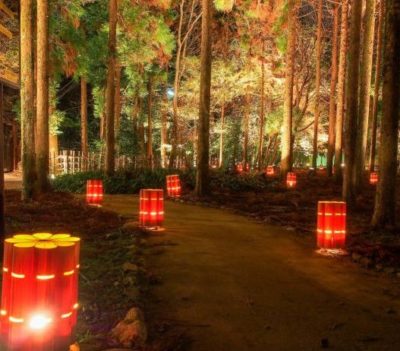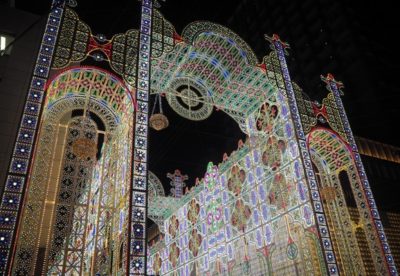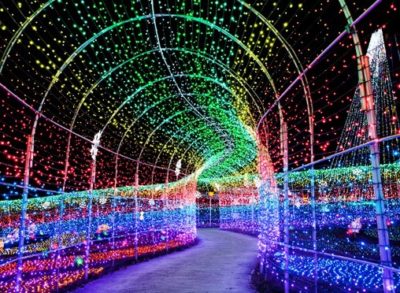
The basic natural states of light and darkness have cycled in continuous alteration since the beginning of time. In the most ancient perceptions of the civilizations of the Middle East, the continuity suggested contingency; that each depended on the other. Throughout mankind’s history, while the passage from light to darkness posed no inherent threats, darkness brought concerns and the reemergence of light out of darkness seemed more precarious. Darkness was typically viewed as the mysterious, impenetrable well-spring and source of light; and light become associated with the primal conditions of life: warmth, family, and prosperity, and salvation. These symbolic or metaphorical meanings were adopted in an attempt to give meaning to the natural world, and rites were developed to try to influence fortune.
During the ancient Chinese Lantern Festival, originating as far back as the Han dynasty (206 BCE to 220 CE), Buddhist monks would light lanterns on the 15th day of the lunar year in honour of the Buddha, whose name literally means, “The Enlightened One”. The practice later spread throughout China and other parts of Asia. Today, the Lantern Festival, also called Yuan Xiao Festival, is a holiday celebrated in Asian countries that honours deceased ancestors. The Lantern Festival aims to promote reconciliation, peace, and forgiveness.

In recent years, Christmas-season light festivals have become huge, extravagant celebrations in Japan. As the winter season descends, temperatures fall and the days shorten, the city of Tokyo and surroundings areas are lit up by elaborate and beautiful illuminations. Among the first and most spectacular light shows is Kobe’s Luminarie, an Italian designed light festival which was first held as a memorial to the more than 5000 victims of the disastrous Kobe earthquake in 1995. Over 200,000 individually hand painted lights were donated by the Italian Government and the installation is powered each year with electricity generated from biomass in order to stay environmentally friendly. Another illumination on Marunouchi Naka-Dori Street and the Otemachi Naka-Dori Street of Tokyo, particularly known for their 1.2 kilometers of name-brand shops, nearly one million LED lights beautifully illuminate approximately 200 trees, creating a champagne-golden modern winter wonderland. The illumination at the Country Farm Tokyo German Village features 3 million LED lights in a nature-themed park to create an enchanting fairytale world.

It occurs to this writer that these astonishing illuminations displayed each winter, and dozens more equally extravagant, are a surprisingly modern take, an evolution perhaps, of classic Japanese aesthetic sensibilities. The lights, in the starkest contrast possible to the long, dark winter nights, “illuminate” the impermanence of any one basic state, while at the same time reminding us of the warmth, family, and prosperity that light has symbolized throughout the ages, and perhaps also suggesting a moment to stop, take stock, and be grateful for our good fortune.
Come Visit Art De Tama Fine Art!
Japanese artist in the United States. Tamao Nakayama was born and raised in Tokyo, Japan, and moved to the U.S. when she was 25 years old. She is still deeply influenced by the Japanese aesthetic, and the belief that ‘less is more’. She is a minimalist abstract artist. She paints and sculpts.
